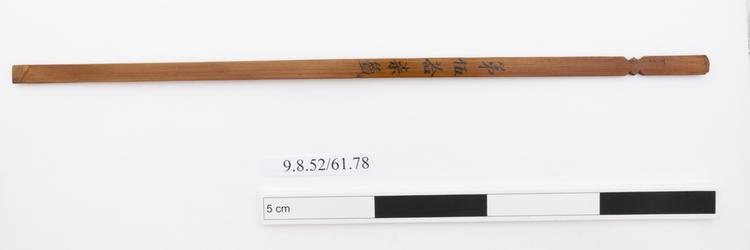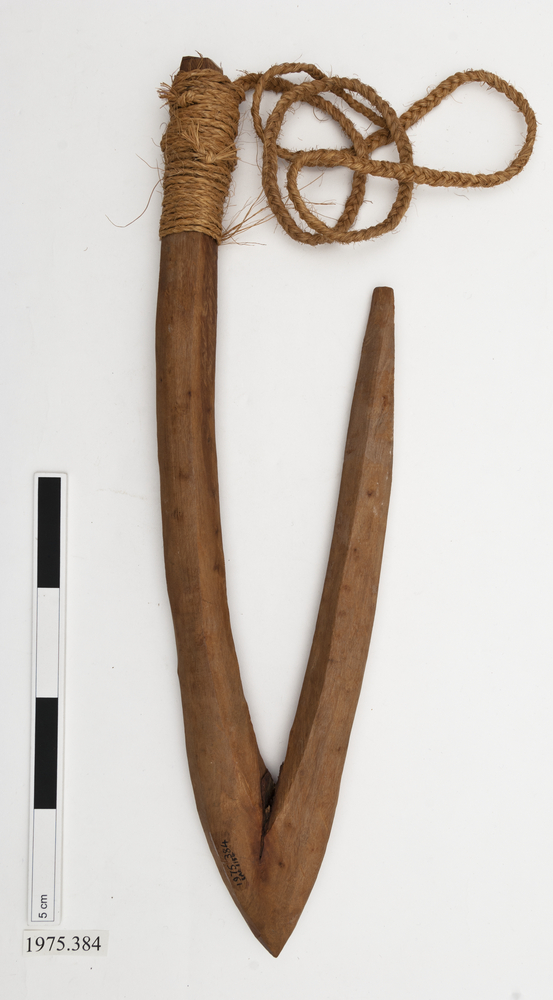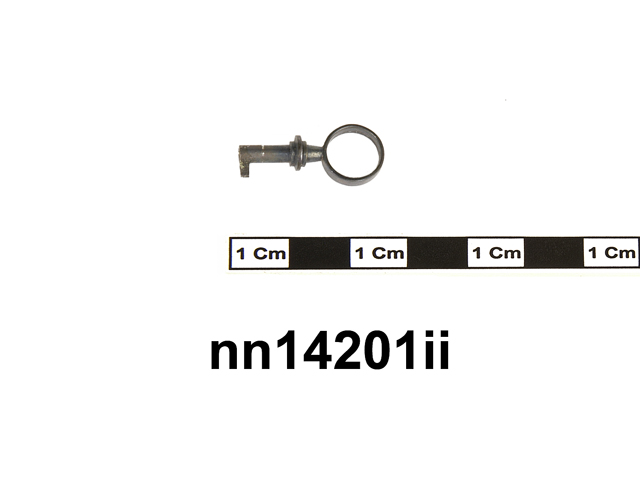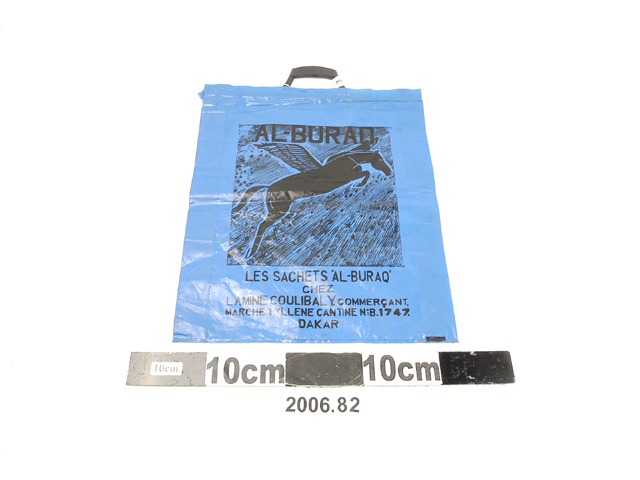Carved wooden helmet sowei mask, associated with the female Sande society. It is characteristically polished to a high shine in black. The mask displays a number of physical characteristics often associated with female beauty, including neck rings (indicating health and fertility), a high forehead, down cast eyes and a small mouth. The sowei mask bears an elaborate hairstyle consisting of a series of plaits and three high ridges. The hair is adorned by representations of two horn-shaped sebbeh, or amulets. Black dyed raffia has been attached to the bottom ridge of the mask to cover the entire body of its wearer during performance, and a red (the colour of the Sande society) ribbon is tied to the top.
This is a relatively recent example of a sowei mask, collected by Jenny Oram who completed fieldwork in Freetown during the late 1990s. The mask is associated with female initiation societies in Sierra Leone, parts of Guinea, and Liberia. In Sierra Leone these are known as the Sande (Mende) or Bondo/Bundu (Temne) societies. The mask is worn by a high ranking member of the society, the dancing sowei , known as the ndoli jowei among the Mende or a-Nowo among the Temne. The dancing sowei emerges during society public occasions, such as when girls are taken away from their families for initiation, and when they return to the community as women.

































































































































































































































































































































































































































































































































